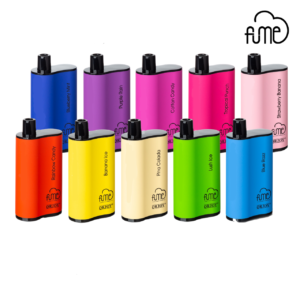The rise of vaping has sparked a significant shift in the landscape of tobacco and nicotine consumption. Despite its popularity, there’s still much debate and misinformation surrounding vaping. Understanding the facts is crucial for making informed decisions. Here are five essential facts about vaping that you need to know.
1. What Exactly is Vaping?
Vaping refers to the use of electronic cigarettes (e-cigarettes) or other vaping devices to inhale an aerosol, commonly called vapor, which typically contains nicotine, flavorings, and other chemicals. Unlike traditional cigarettes, vaping devices do not burn tobacco. Instead, they use a battery-powered heating element to vaporize the liquid inside a cartridge or tank. This vapor is then inhaled by the user. The process of vaporization eliminates the combustion process, which in traditional smoking releases a myriad of harmful substances including tar and carbon monoxide.
2. Health Risks and Benefits
The health implications of vaping are complex and a topic of ongoing research.
Risks: Vaping is not without health risks. The vapor produced can contain potentially harmful substances such as nicotine, formaldehyde, and acrolein. Nicotine is highly addictive and can have adverse effects on brain development in adolescents. Some vaping liquids have been found to contain harmful chemicals that can cause lung disease. The long-term effects of vaping are still unknown, but there have been reports of vaping-related lung injuries (EVALI).
Benefits: For adult smokers, vaping may offer a less harmful alternative to traditional cigarettes. Public Health England, for instance, has stated that e-cigarettes are around 95% less harmful than smoking. Vaping can help some smokers quit by providing a similar experience to smoking while reducing exposure to many of the harmful substances found in tobacco smoke.
3. The Role of Flavors
One of the major attractions of vaping is the wide variety of flavors available. From traditional tobacco and menthol to exotic fruit and dessert flavors, the options are nearly limitless. These flavors can make vaping more appealing, particularly to younger people, which has raised public health concerns.
Impact on Youth: The enticing flavors can attract teens and young adults, potentially leading to nicotine addiction and serving as a gateway to traditional smoking. The U.S. Food and Drug Administration (FDA) and other regulatory bodies have been working to restrict the sale of flavored e-cigarettes to curb their appeal among youths.
Smoking Cessation Aid: For adult smokers trying to quit, flavors can play a positive role by making the transition from smoking to vaping more enjoyable, potentially increasing the likelihood of quitting smoking altogether.
4. Regulation and Legal Status
The regulatory landscape for vaping varies significantly around the world. In the United States, the FDA regulates e-cigarettes as tobacco products. This includes oversight on manufacturing standards, marketing practices, and product approvals. In Europe, the Tobacco Products Directive (TPD) imposes strict regulations on the marketing and production of vaping products, including limits on nicotine concentration and tank sizes.
Some countries have taken a more restrictive approach. For example, in Australia, nicotine-containing e-cigarettes are effectively banned unless prescribed by a doctor. Conversely, the UK has embraced vaping as a smoking cessation tool, with public health campaigns encouraging smokers to switch to vaping.
5. Environmental Impact
Vaping is often perceived as a more environmentally friendly option compared to traditional smoking, but it still has its environmental footprint.
E-Waste: Vaping devices, particularly disposable ones, contribute to electronic waste. These devices contain batteries, plastic, and metal components that require proper disposal and recycling. Improper disposal can lead to environmental pollution and resource wastage.
Litter: Just like cigarette butts, discarded vaping pods and cartridges can become litter, contributing to pollution and harming wildlife. Efforts to encourage proper disposal and recycling of vaping products are essential to mitigate their environmental impact.
Conclusion
Vaping is a multifaceted issue with various health, regulatory, and environmental considerations. While it offers a potentially less harmful alternative to smoking for adults, it also poses significant risks, especially for young people. Understanding the facts about vaping can help individuals make informed decisions and guide public health policies to balance harm reduction with the protection of public health. As research continues, staying informed and adaptable to new information is crucial in navigating the complexities of vaping.



